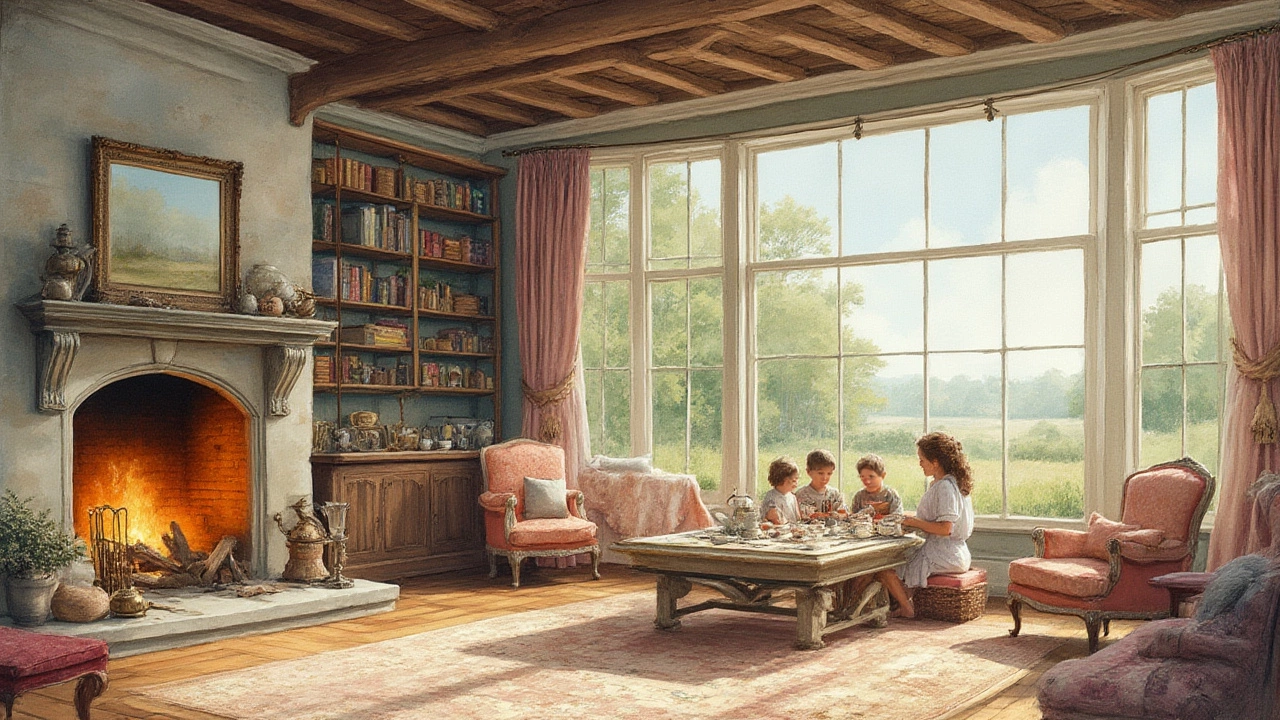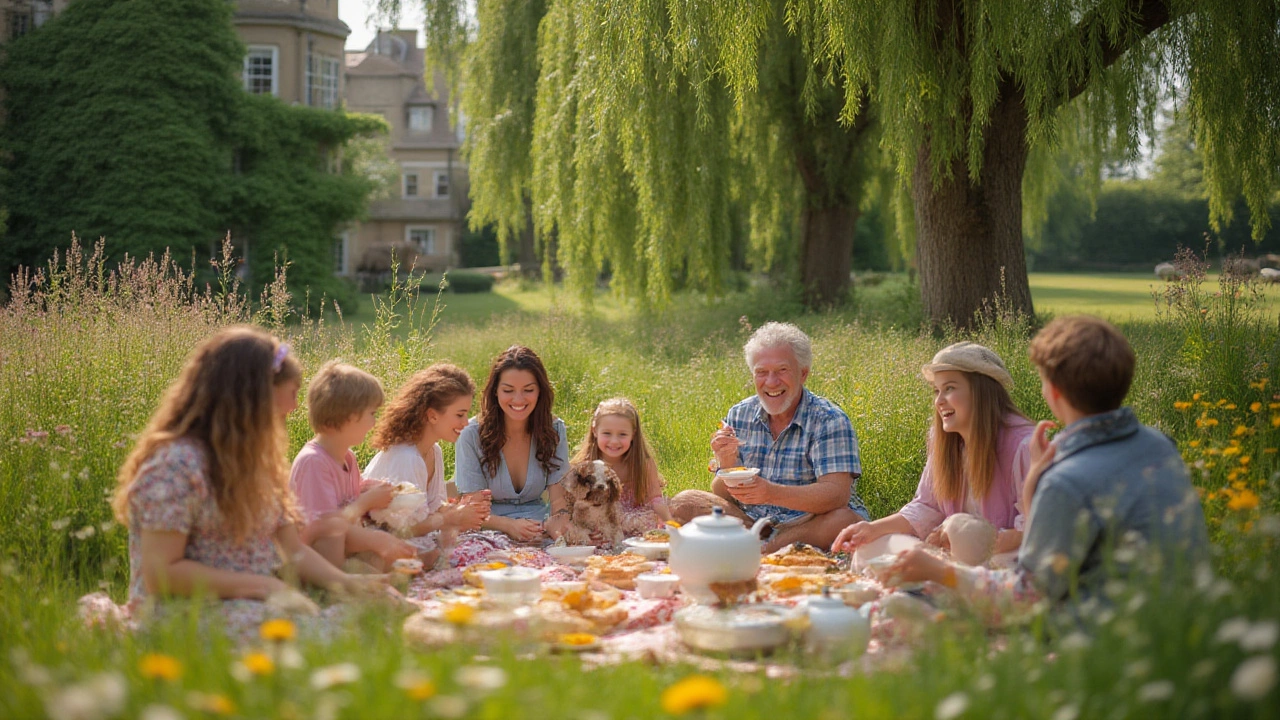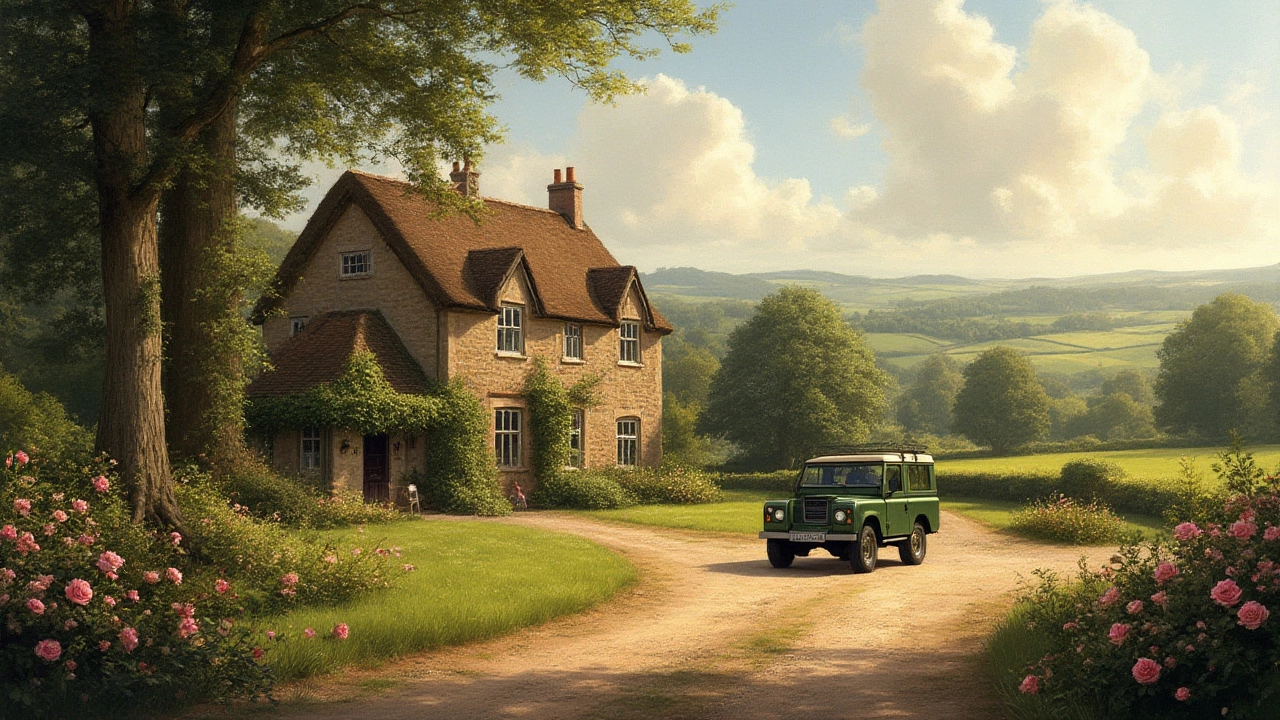Imagine waking up to birdsong instead of alarms, with the soft creak of old floorboards and a slow sunrise over misty fields outside your window. There’s something irresistible about the charm and promise of a country house. But what really counts as a ‘country house’? Is it just a pretty cottage in the hills, or does it take more than fresh air and rolling fields to earn the title? The truth is, there’s no one-size-fits-all answer. Definitions shift depending on history, style, and local traditions. Yet, at the heart of the matter is a blend of architectural personality, a certain way of life, and a tie to the land. Let’s unpack all the details that turn an ordinary house into a genuine rural retreat.
The Hallmarks of a Country House: Tradition Meets Functionality
The idea of a country house isn’t only about where it sits—it’s about how it feels and functions. You’ll rarely find a cookie-cutter design. Classic country houses are usually set apart from bustling towns, surrounded by generous gardens, fields, or old woods. Their architecture tends to reflect local materials: think stone walls in the Cotswolds, whitewashed timber in Scandinavia, adobe in the American Southwest, or terra cotta tiles on Tuscan farmhouses. These choices weren’t for show. Generations built with what was at hand—for warmth, shelter, and sometimes to show a little family pride.
Inside, you’ll spot exposed beams, fireplaces built for actual heating (not just ambiance), deep windowsills, and timber floors meant to withstand muddy boots and unpredictable weather. Families once lived much of their lives at home, so country houses prioritized big kitchens, pantries, and long farmhouse tables. The tradition carries over, as modern owners renovate old dairies into family rooms or turn barns into cozy hideaways. In fact, converting outbuildings into living spaces has become a trend—great for guests, hobbies, or remote work.
The outdoors isn’t just a backdrop. Traditional country houses almost always feature practical gardens—both ornamental and productive. It’s not just about wildflowers and roses; you’ll often find vegetable patches, orchards, stone paths, or kitchen-waste compost bins tucked in the corner. If you love DIY, these gardens can be a dream: you can go classic with neatly trimmed box hedges or experiment with wilder, pollinator-friendly planting that’s right on trend.
Even the layout matters. Country houses can be grand (think English manors passed down for centuries) or quite modest, but they’re rarely cramped. Spacious rooms, thick walls, and a certain kind of privacy are typical. There’s usually a defined entryway—sometimes a boot room—so you can leave mud and wellies behind before entering the heart of the home. Practicality and comfort, in other words, are key.
What about modern builds? Newly constructed country houses borrow from tradition but add a few 21st-century upgrades. High-tech heating, insulation, and thoughtful eco-friendly touches (like rainwater harvesting and solar panels) aren’t just nice extras anymore; in new country homes, they’re close to essential. So, whether you’re picturing a thatched cottage or a minimalist eco-house, the heart of a country house is still about harmony with the land and a lifestyle that embraces both heritage and innovation.

Country House Living: Daily Life, Community, and Hidden Challenges
Country house living isn’t just a setting; it’s an entire lifestyle. People are often lured by the idea of peace and quiet, but day-to-day, the countryside brings its own rhythm and set of realities. One fact you might not expect: living in a country house often means becoming a jack-of-all-trades. Need to unblock a drain or fix a fallen-down fence? Most rural homeowners get used to sorting out small issues themselves, simply because the nearest handyman might not be next door.
But that’s part of the appeal, too. There’s a deep sense of independence and practical skill-building, whether you’re growing tomatoes, splitting firewood, or baking bread from scratch. Many find life in a country house nudges them toward sustainability almost naturally—composting, rainwater collection, or using wood stoves instead of cranking up the central heating. Eco-friendly habits aren’t just buzzwords; they’re daily choices when you have more land and resources at hand.
The heartbeat of any real country house is its connection to the wider rural community. While some remote settings offer more solitude, most country dwellers get to know their neighbors (and not just the people—animals too). Borrowing tools, sharing garden surplus, or lending a hand after a storm are the kinds of exchanges that keep a countryside community running. Local events—from harvest festivals to craft fairs—bring people together, and country homes end up feeling like hubs rather than just private retreats.
Food and drink tend to taste better out here, and not just because of the fresh air. Many country house owners take pride in baking with their own apples, making jam from backyard brambles, or buying eggs directly from a neighbor’s hens. This connection to simple, seasonal food is a huge part of the country house experience. If you’re dreaming about moving to the country, take a closer look at the kitchen—does it have room for pickling, baking, and long, lazy breakfasts?
No story about country living would be honest without a quick mention of the challenges. It’s not all gingham curtains and lilies by the door. Winters can be tough—old stone houses are notorious for being chilly, so plenty of insulation is a must. Transport can be a hassle, especially if you love city conveniences. And, yes, there are critters. You’ll soon become familiar with foxes, owls, spiders, and the occasional mouse. But that gives a sense of life thriving all around, which, for many, is exactly the charm.
One tip: before committing to a country house, stay in one for a while. Many people rent or book short-term stays to test the rhythm of rural living before leaping in. You’ll quickly learn whether you love the stillness, the space, and the quiet night skies—or if you miss the city buzz. No countryside experience is alike, but there’s always adventure just outside your window.

Modern Country Houses: Blending Tradition with Contemporary Style
Country houses aren’t stuck in the past. If you scroll through current design magazines, you’ll spot a new wave of countryside homes blending old and new. Think: sleek glass walls opening onto wildflower gardens, barn conversions with underfloor heating, or slate roofs paired with solar panels. People who buy or build modern country houses usually fall in love with both the beauty of nature and the chance to live more simply—but they still want good Wi-Fi, a workspace, and a quick espresso machine in the kitchen.
This new style nods to tradition but isn’t afraid to change things up. Some homeowners restore original features—with lime-plastered walls, flagstone floors, and exposed brickwork—while updating the layout for open-plan living. Big windows are popular now to bring in more daylight and make the most of gorgeous rural views. It’s not just about looks. Using smart home tech for energy savings—like programmable thermostats, app-controlled ovens, or even robotic lawnmowers—has become normal in rural settings. The best new country houses respect their landscape, often built with reclaimed local materials to keep their carbon footprint low.
Gardens are getting a re-think too. Instead of endless lawns to mow, design-savvy owners favor wild borders, kitchen gardens, and pollinator patches—attractive and eco-friendly. Water conservation and wildlife-friendly gardening have become hot topics. More people design their outdoor space to encourage birds, bees, and butterflies. Raised veggie beds, herb spirals, and rustic seating nooks blend style with self-sufficiency.
Remote work has changed the country house game, too. With reliable internet, many people are choosing to relocate from urban apartments to rural homes, turning outbuildings into creative studios or sleek home offices. The desire for work-life balance and extra space is driving up the demand for flexible, multi-use rooms—spaces that flip from yoga studio to guest bedroom with minimal fuss.
Location still matters. Proximity to small towns, but with enough true countryside vibe, is ideal for many seeking a mix of tranquility and practical access to shops and schools. There are even modern takes on the tiny house movement—compact, custom-built country houses that push the boundaries of what rural living can look like. Whether you want a sprawling estate or a pint-sized cottage, the key is finding an authentic link with nature and community.
So if you’re thinking about country living, don’t get hung up on rigid definitions. A real country house can be old or new, grand or simple, traditional or ultra-modern. What matters is its spirit—rooted in the landscape, designed for comfort, and perfectly tuned for a life where you set the pace. As long as you bring curiosity, a sense of adventure, and a willingness to get your hands dirty, you really can make a country house your own little slice of paradise. In the end, it’s less about the walls and roof, and more about the life you create within them. Now, isn’t that the real magic of the countryside?
